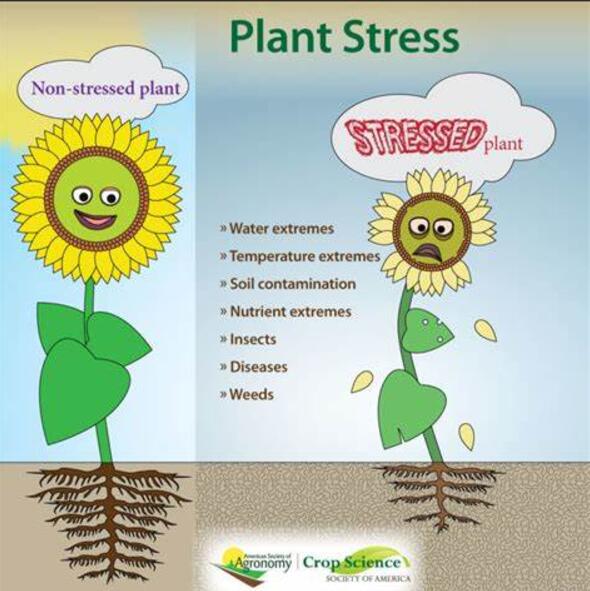Effect of microbial biofertilizer on proteomic profiling, antioxidant enzyme and andrographolide content in Andrographis paniculata Burm.f Nee. under drought stress
IF 6.8
Q1 PLANT SCIENCES
引用次数: 0
Abstract
Andrographis paniculata is a medicinal plant susceptible to drought stress. This study, employing a completely randomized design, examines the impact of drought stress on the growth and andrographolide content of A. paniculata. Microbial biofertilizers were investigated for their ability to mitigate drought stress and enhance resilience in Andrographis paniculata. Their effectiveness was evidenced by plants supplemented with microbial biofertilizers under drought stress (T4) maintaining significantly higher leaf relative water content (RWC) at 78.75 %, compared to unfertilized drought-stressed plants (T2) with only 22.37 % RWC. Microbial biofertilized A. paniculata also exhibited reduced activity of superoxide dismutase (SOD) and peroxidase (POX), indicating mitigated oxidative stress. Importantly, high-performance liquid chromatography (HPLC) analysis revealed that microbial biofertilizer significantly increased andrographolide content, a key bioactive compound, even under drought stress. Proteomic analysis identified key stress responses and photosynthetic proteins upregulated by microbial biofertilizers, particularly under drought. A. paniculata treated with microbial biofertilizers under well-watered conditions (T3) showed increased levels of proteins involved in photosynthesis and stress response (cytochrome F, ATP synthase), and drought tolerance (Kaurene synthase 1). The key photosynthetic enzyme RuBisCO displayed a 2.48-fold increase in T4, suggesting improved photosynthetic efficiency. Unique protein expressions in T4, including ribosomal proteins and UDP-glycosyltransferase, suggest enhanced drought tolerance. Furthermore, consistent upregulation of NAD(P)H-quinone oxidoreductase subunit 5 indicates improved photosynthesis and resilience under both well-watered and drought conditions. Overall, microbial biofertilizers modulated protein expression, enhancing drought tolerance of A. paniculata by improving stress response, photosynthetic capacity, and potentially other cellular processes.

求助全文
约1分钟内获得全文
求助全文
来源期刊

Plant Stress
PLANT SCIENCES-
CiteScore
5.20
自引率
8.00%
发文量
76
审稿时长
63 days
期刊介绍:
The journal Plant Stress deals with plant (or other photoautotrophs, such as algae, cyanobacteria and lichens) responses to abiotic and biotic stress factors that can result in limited growth and productivity. Such responses can be analyzed and described at a physiological, biochemical and molecular level. Experimental approaches/technologies aiming to improve growth and productivity with a potential for downstream validation under stress conditions will also be considered. Both fundamental and applied research manuscripts are welcome, provided that clear mechanistic hypotheses are made and descriptive approaches are avoided. In addition, high-quality review articles will also be considered, provided they follow a critical approach and stimulate thought for future research avenues.
Plant Stress welcomes high-quality manuscripts related (but not limited) to interactions between plants and:
Lack of water (drought) and excess (flooding),
Salinity stress,
Elevated temperature and/or low temperature (chilling and freezing),
Hypoxia and/or anoxia,
Mineral nutrient excess and/or deficiency,
Heavy metals and/or metalloids,
Plant priming (chemical, biological, physiological, nanomaterial, biostimulant) approaches for improved stress protection,
Viral, phytoplasma, bacterial and fungal plant-pathogen interactions.
The journal welcomes basic and applied research articles, as well as review articles and short communications. All submitted manuscripts will be subject to a thorough peer-reviewing process.
 求助内容:
求助内容: 应助结果提醒方式:
应助结果提醒方式:


